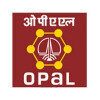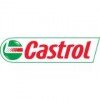
i
Finorchem
Limited
Filter interviews by
Finorchem Limited Assistant Manager Operations Interview Questions and Answers
6 Interview questions
I studied various unit operations including material handling, quality control, inventory management, and process optimization.
Material handling techniques such as batching, mixing, and packaging
Quality control methods like statistical process control and Six Sigma
Inventory management strategies such as ABC analysis and Just-In-Time
Process optimization tools like Lean manufacturing and Kaizen
Types of pumps include centrifugal pumps, positive displacement pumps, and axial flow pumps.
Centrifugal pumps: use a rotating impeller to increase the pressure of a fluid.
Positive displacement pumps: move fluid by trapping a fixed amount and forcing it through the discharge.
Axial flow pumps: move fluid parallel to the pump shaft.
Examples: Centrifugal pump - water pump, Positive displacement pump - diaphragm pump, ...
The thickness of an autoclave can vary depending on the model and manufacturer.
The thickness of an autoclave chamber typically ranges from 6mm to 12mm.
The thickness of the autoclave walls can be influenced by factors such as pressure rating and material composition.
Some autoclaves may have additional insulation layers to maintain temperature and pressure.
It is important to consult the manufacturer's specifications...
Draw reactor P&ID with safety equipment
Include reactor vessel, heat exchanger, pumps, valves, and instruments
Add safety equipment such as relief valves, pressure gauges, and emergency shutdown systems
Label all components and connections clearly for easy understanding
Types of reactors include batch, continuous stirred-tank, plug flow, and fluidized bed reactors.
Batch reactors: operate for a fixed amount of time before being emptied
Continuous stirred-tank reactors: have continuous flow of reactants and products
Plug flow reactors: have perfect mixing in the axial direction
Fluidized bed reactors: solid particles are suspended in a fluid and react with the fluid
HAZOP stands for Hazard and Operability Study, while PSSR stands for Pre-Startup Safety Review. They are both important processes in ensuring safety in operations.
HAZOP is a systematic and structured approach to identifying potential hazards and operability issues in a process plant.
PSSR is a review conducted prior to the start-up of a new or modified process to ensure that all safety systems are in place and func...
Finorchem Limited Assistant Manager Operations Interview Experiences
2 interviews found
I applied via Walk-in and was interviewed in Jul 2023. There were 2 interview rounds.
(3 Questions)
- Q1. Draw reactor P&ID with all safety equipment.
- Ans.
Draw reactor P&ID with safety equipment
Include reactor vessel, heat exchanger, pumps, valves, and instruments
Add safety equipment such as relief valves, pressure gauges, and emergency shutdown systems
Label all components and connections clearly for easy understanding
- Q2. Just ask do you know Dcs and SAP .not single question ask about this.
- Q3. HAZOP and PSSR describe
- Ans.
HAZOP stands for Hazard and Operability Study, while PSSR stands for Pre-Startup Safety Review. They are both important processes in ensuring safety in operations.
HAZOP is a systematic and structured approach to identifying potential hazards and operability issues in a process plant.
PSSR is a review conducted prior to the start-up of a new or modified process to ensure that all safety systems are in place and functioni...
(1 Question)
- Q1. Just asked Salary and location where do yo live
I applied via LinkedIn and was interviewed before Nov 2022. There were 2 interview rounds.

(6 Questions)
- Q1. Tell me something about yourself
- Q2. What are the unit operations you studied
- Ans.
I studied various unit operations including material handling, quality control, inventory management, and process optimization.
Material handling techniques such as batching, mixing, and packaging
Quality control methods like statistical process control and Six Sigma
Inventory management strategies such as ABC analysis and Just-In-Time
Process optimization tools like Lean manufacturing and Kaizen
- Q3. What are the types of reactors
- Ans.
Types of reactors include batch, continuous stirred-tank, plug flow, and fluidized bed reactors.
Batch reactors: operate for a fixed amount of time before being emptied
Continuous stirred-tank reactors: have continuous flow of reactants and products
Plug flow reactors: have perfect mixing in the axial direction
Fluidized bed reactors: solid particles are suspended in a fluid and react with the fluid
- Q4. Whats are the types of pumps
- Ans.
Types of pumps include centrifugal pumps, positive displacement pumps, and axial flow pumps.
Centrifugal pumps: use a rotating impeller to increase the pressure of a fluid.
Positive displacement pumps: move fluid by trapping a fixed amount and forcing it through the discharge.
Axial flow pumps: move fluid parallel to the pump shaft.
Examples: Centrifugal pump - water pump, Positive displacement pump - diaphragm pump, Axial...
- Q5. Whats is meant by autoclave
- Q6. What is thickness of autoclave
- Ans.
The thickness of an autoclave can vary depending on the model and manufacturer.
The thickness of an autoclave chamber typically ranges from 6mm to 12mm.
The thickness of the autoclave walls can be influenced by factors such as pressure rating and material composition.
Some autoclaves may have additional insulation layers to maintain temperature and pressure.
It is important to consult the manufacturer's specifications for ...
Interview Preparation Tips
Top trending discussions






Interview questions from similar companies

Assistant Manager Operations Interview Questions & Answers
HPCL-Mittal Energy Limitedposted on 17 Oct 2021
I applied via Naukri.com and was interviewed before Oct 2020. There were 3 interview rounds.
Interview Questionnaire
2 Questions
- Q1. HR questions: My first question was tell me about yourself and my work experiences, second: what is reason for leaving your all previous companies, third: are u comfortable in hindi speaking(As im from And...
- Q2. Technical: Catalyst loading, plant PFD ( my previous experience was from ammonia plant).
Interview Preparation Tips
Finally dont get disappointed if not selected, as u have no. of opportunities once u have 3yrs of work experience

Assistant Manager Operations Interview Questions & Answers
PCBL Chemical Limitedposted on 9 Dec 2023
I applied via Approached by Company and was interviewed before Dec 2022. There were 4 interview rounds.

(4 Questions)
- Q1. Round 1 was basics taken by Unit production head, Mundra. Asked to introduce myself.
- Q2. Current experience and roles and responsibilities of the job
- Ans.
I have 5 years of experience in operations management, overseeing daily activities, optimizing processes, and leading a team.
Managed daily operations to ensure efficiency and productivity
Optimized processes to improve workflow and reduce costs
Led a team of employees, providing guidance and support
Implemented new strategies to enhance overall performance
Collaborated with other departments to achieve company goals
- Q3. Questions regarding unit operations used in the plant, distillation, and simple MT questions.
- Q4. Have you ever handled a critical situation or contributed something new to the place you work.
(4 Questions)
- Q1. This was on site with the plant head, Mundra . It went on for about 1 hour. Introduction first
- Q2. What is the current role you have in the company and why do you want to change
- Q3. The whole process of the plant i was working in detail with safety guidelines, operation parameters, hazards and risks, team hierarchy, storage and packing of products, waste water treatment, utilities use...
- Q4. What salary are you expecting and why
(2 Questions)
- Q1. HR was online over teams. Head HR from HO asked questions.
- Q2. Introduction, Strengths and Weaknesses, Contribution in current role, Team Handling, career plan etc .
Interview Preparation Tips

Assistant Manager Operations Interview Questions & Answers
Nayara Energyposted on 30 Aug 2023
I applied via Campus Placement and was interviewed in Mar 2023. There were 4 interview rounds.

The test was so easy that all the students could search answers online from google by copy pasting it. There was very much cheating during the test and the second round was group discussion in which they eliminated 90% of participants who cleared the shit test. The interviewer was rude and he only selected those candidates which he was told to select by some senior employee whom the participants had already contacted beforehand to select. He asked hard questions and unrelevenat questions like what is the pressure in a truck tyre, what is area of india and other questions not related to chemical engineering.
The dertails of the group discussion is given above. it was terrible and swnseless the HR was unattentivve.
(2 Questions)
- Q1. The onterviewer was partial in asking questions and only selscted those candidates to whom he was yold to select before hand by some contacts in company.
- Q2. What is the pressure in a truck tyre? what is main objective of chemical engineeirng? who invented chemical engineering?
- Ans.
The pressure in a truck tyre typically ranges from 80 to 100 psi.
Truck tyres are designed to handle higher pressures compared to regular car tyres.
Proper tyre pressure is important for vehicle safety and fuel efficiency.
Pressure can vary based on the type of truck and load it is carrying.
Interview Preparation Tips

I applied via Approached by Company and was interviewed before Sep 2022. There were 2 interview rounds.

(2 Questions)
- Q1. How long have you been in the previous company & how handled the teams in critical situations.. I was there for 4 years & everyone followed the policies and no any critical situations.
- Q2. Could you achieve the target systematicallyand how ? Yes, I can motivate, train & support the team to drive towards the goals set by the Management
- Ans.
Yes, by motivating, training, and supporting the team to achieve set goals systematically.
Set clear and achievable targets for the team
Provide regular feedback and guidance to team members
Implement performance tracking systems to monitor progress
Offer training and development opportunities to enhance skills
Encourage teamwork and collaboration among team members
Interview Preparation Tips
- Personality development
- Relevant subject
- Go through the company profile

I appeared for an interview before Feb 2024.
About using Excel and some formulas related to it.

I applied via Walk-in and was interviewed in May 2024. There was 1 interview round.
(1 Question)
- Q1. Which is starting process of extrusion machine.
- Ans.
The starting process of an extrusion machine is feeding the raw material into the hopper.
Feeding the raw material into the hopper is the first step of the extrusion process
The raw material is typically in the form of pellets, powder, or granules
The hopper then feeds the raw material into the extruder barrel for melting and shaping

I applied via Naukri.com and was interviewed in May 2023. There were 2 interview rounds.

(2 Questions)
- Q1. Plastics are widely used in daily life.
- Ans.
Plastics are versatile materials used in various industries and daily life for their durability, flexibility, and cost-effectiveness.
Plastics are used in packaging materials such as bottles, containers, and bags.
They are also used in construction for pipes, insulation, and flooring.
Plastics play a crucial role in the automotive industry for components like dashboards, bumpers, and interior trim.
In electronics, plastics...
- Q2. WHY ARE YOU JOIN SUPREME INDUSTRIES LTD
- Ans. It's one of the biggest Plastics industries in India, It's product also good and It's supportive company for employees.
Interview Preparation Tips

Officer Interview Questions & Answers
Supreme Industriesposted on 24 Jan 2024
I applied via Recruitment Consulltant and was interviewed before Jan 2023. There was 1 interview round.
(3 Questions)
- Q1. Asked the working of different excel formula?
- Q2. Questions Regarding Computer Skills?
- Q3. Works I was handling in my previous profile?
Finorchem Limited Interview FAQs
Tell us how to improve this page.
Finorchem Limited Interviews By Designations
- Finorchem Limited Production Officer Interview Questions
- Finorchem Limited Officer Interview Questions
- Finorchem Limited Assistant Manager Operations Interview Questions
- Finorchem Limited Research Associate Interview Questions
- Finorchem Limited Manager Interview Questions
- Finorchem Limited Assistant Manager Interview Questions
- Finorchem Limited HR Manager Interview Questions
- Finorchem Limited General Manager Interview Questions
- Show more
Overall Interview Experience Rating
based on 2 interview experiences
Difficulty level
Duration
Interview Questions from Similar Companies
|
Plant Operator
25
salaries
| ₹2 L/yr - ₹3.8 L/yr |
|
Officer
17
salaries
| ₹3 L/yr - ₹6 L/yr |
|
Production Officer
12
salaries
| ₹1.8 L/yr - ₹6.8 L/yr |
|
Senior Executive
12
salaries
| ₹6.5 L/yr - ₹9 L/yr |
|
Assistant Manager
10
salaries
| ₹8.5 L/yr - ₹12.9 L/yr |

Nayara Energy

Supreme Industries

HPCL-Mittal Energy Limited

Sintex-bapl
- Home >
- Interviews >
- Finorchem Limited Interview Questions












